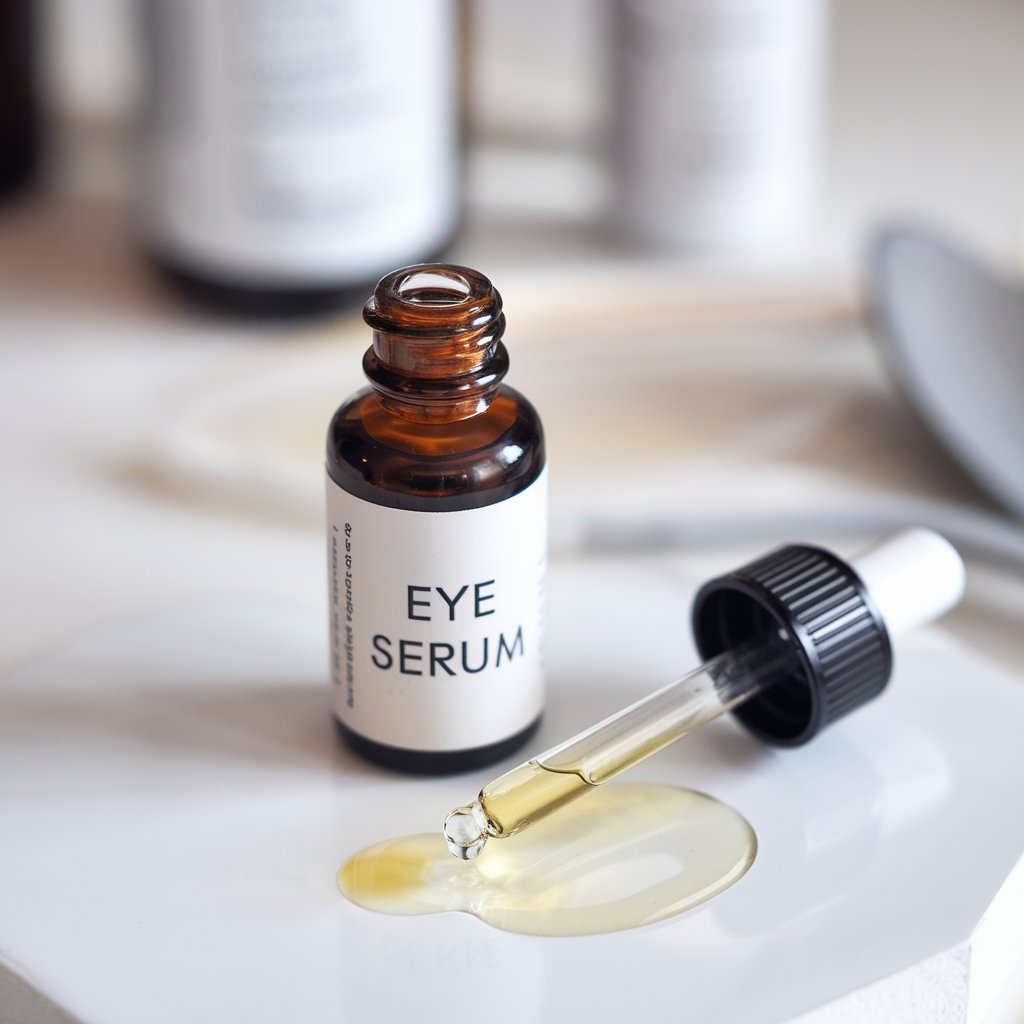The Unique Challenges of Oily Skin
Oily skin presents its own set of challenges, especially when it comes to finding the right skincare products. While excess oil can give your skin a natural glow, it can also lead to clogged pores, breakouts, and a shiny appearance. This makes it crucial to find products that balance your skin’s oil production without exacerbating the problem.
When it comes to the delicate skin around your eyes, the need for a carefully chosen eye cream becomes even more pronounced. The skin in this area is thinner and more sensitive than the rest of your face, making it more susceptible to issues like dark circles and puffiness. If you have oily skin, you need an eye cream that not only addresses these concerns but also manages to do so without contributing to oiliness.
What Makes a Good Eye Cream for Dark Circles and Puffiness?
The best eye cream for oily skin should be lightweight, non-greasy, and formulated to target specific issues like dark circles and puffiness. Dark circles can make you look tired and older, while puffiness can add a swollen appearance that further detracts from your overall look. A good eye cream can help to minimize these issues, leaving you with a brighter, more youthful appearance.
Look for products that contain ingredients like caffeine, peptides, and hyaluronic acid. These ingredients work together to reduce inflammation, improve circulation, and provide hydration without clogging pores. Caffeine helps to constrict blood vessels, reducing the appearance of dark circles, while peptides strengthen the skin’s structure, making it less prone to puffiness. Hyaluronic acid, a powerful hydrator, ensures that your skin remains moisturized without becoming oily.
Understanding the Causes of Dark Circles and Puffiness
Dark circles and puffiness can be caused by a variety of factors, including genetics, lifestyle choices, and environmental factors. For those with oily skin, these issues can be exacerbated by the skin’s natural tendency to produce excess oil. This excess oil can mix with dead skin cells and dirt, leading to clogged pores and inflammation, which in turn can cause puffiness.
Dark circles are often the result of poor circulation and the thinness of the skin around the eyes, which makes blood vessels more visible. Puffiness, on the other hand, can be caused by fluid retention, allergies, or lack of sleep. By understanding the underlying causes of these issues, you can choose an eye cream that effectively addresses them.
Before and After: The Transformation with a Good Eye Cream
Using a good eye cream consistently can lead to noticeable improvements in the appearance of your eye area. Many people report seeing a significant difference in before and after comparisons, with reductions in both dark circles and puffiness. The key is to use the product as directed and to be patient, as results can take several weeks to become fully visible.
Before using an eye cream, take a close look at the areas around your eyes. Are they darker than the rest of your face? Do you notice any puffiness or swelling? After a few weeks of regular use, compare your results. Many users find that their dark circles have lightened, puffiness has decreased, and the overall texture of their skin has improved.
How to Use Eye Cream or Serum Correctly
Applying your eye cream correctly is essential for getting the best results. Here’s a step-by-step guide:
- Cleanse Your Skin: Start with a clean face to remove any oil, dirt, and makeup. This will allow the eye cream to penetrate more effectively.
- Dispense the Right Amount: Use a small amount of eye cream—about the size of a pea for both eyes. Overusing the product can lead to excess residue and may irritate it.
- Apply Gently: Use your ring finger to apply the cream, as it exerts the least pressure. Dab the cream around your eyes, starting from the inner corners and moving outward. Be gentle to avoid stretching the delicate skin around your eyes.
- Pat, Don’t Rub: Gently pat the cream into your skin until it’s fully absorbed. Rubbing can irritate and may reduce the effectiveness of the product.
- Follow with a Suitable Moisturizer: After applying your eye cream, use a lightweight, oil-free moisturizer to keep your skin hydrated and balanced.
- Use Morning and Night: For best results, apply your eye cream twice a day—once in the morning and once at night.
Choosing the Best Eye Cream for Your Skin Type
When selecting an eye cream for oily skin, it’s important to consider your skin’s unique needs. Look for a product that is labeled as non-comedogenic, meaning it won’t clog your pores. The best eye cream should also be lightweight and fast-absorbing, with a formulation that hydrates without leaving a greasy residue.
Consider your specific concerns as well. If dark circles are your main issue, look for an eye cream that contains brightening ingredients like vitamin C. If puffiness is your biggest concern, choose a product with anti-inflammatory ingredients like caffeine or green tea extract. By tailoring your choice to your skin’s needs, you’ll be more likely to see the results you want.
Conclusion: The Benefits of a Good Eye Cream
A good eye cream can be a game-changer in your skincare routine, especially if you have oily skin. By choosing a product that is specifically designed to address dark circles and puffiness without clogging pores, you can achieve a brighter, more youthful appearance.
Consistency is key when it comes to skincare. Use your eye cream regularly, and give it time to work. With the right product and a little patience, you’ll be able to reduce the appearance of dark circles and puffiness, leaving you with a refreshed, rejuvenated look.

